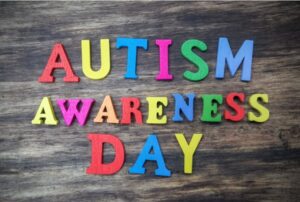Avoidant attachment in children is a type of attachment style characterized by a child's behavior of avoidance and emotional distance in their relationship with primary caregivers, usually parents. These children often appear to be self-reliant and not close to their caregivers, even in situations where comfort and support are needed, displaying independence and self-protection.
Case Study: Avoidant Attachment in Children
Let's consider a case: A mother mentioned that her daughter always prefers to be alone, going straight home after school and never playing outside. Although her daughter once had friends, they eventually stopped playing with her. The mother couldn't understand why no other children wanted to play with her daughter. When asked if she spent little time with her child, the mother explained that both she and the father were very busy with work, so the child was primarily cared for by the grandparents. It was only when the child started elementary school that she came to live with her parents. This child is likely experiencing avoidant attachment issues.
What are the Characteristics of Avoidant Attachment in Children?
- Lack of Emotional Response: When caregivers leave or return, children with avoidant attachment often seem indifferent and do not show noticeable emotional reactions.
- Avoidance of Close Contact: When needing comfort or support, they tend to avoid getting close to their caregivers, showing a stance of not needing to depend on others.
- Emphasis on Independence: These children tend to rely on themselves and rarely seek help or support from others.
- Limited Emotional Expression: In interactions with others, they usually do not express their emotions or needs, appearing emotionally cold.
What Causes Avoidant Attachment?
- Lack of Consistent Care: If children do not receive enough love and security from caregivers early on, they may develop self-protection mechanisms, avoiding dependence on others.
- Neglect or Coldness from Caregivers: If caregivers respond to children's needs with neglect or coldness, children may develop avoidant attachment to avoid emotional hurt.
- Overemphasis on Independence: In some families, independence is overly emphasized, and children are taught from a young age to handle emotions and problems on their own, reducing dependence on others.
What are the Negative Impacts?
- Interpersonal Relationships: Children with avoidant attachment may appear cold in interactions with peers, making it difficult to form deep friendships.
- Emotional Development: Due to the habit of self-protection, these children may have difficulties in emotional expression and processing, potentially continuing this pattern into adulthood.
- Mental Health: Long-term emotional suppression and lack of close relationships can increase the risk of psychological problems, such as anxiety and depression.
How to Treat Avoidant Attachment?
Change is possible for children with avoidant attachment. The following methods may help:
- Building Confidence through Praise
To boost a child's confidence, offer regular praise. For example, when your child completes their homework, you can say, "You did a great job on your homework today! Your work is excellent!" Such positive feedback helps reinforce the child's belief in their abilities. Additionally, fostering their interests and helping them learn new skills can further build their confidence.
- Experiencing Positive Activities Together
Engage in enjoyable activities with your child, such as playing games or taking daily walks to appreciate the beauty of the surroundings and the simple joys of life. When your child starts showing interest in the outside world and embraces new experiences, it indicates they are gradually opening up emotionally.
- Accepting Negative Emotions
Everyone experiences negative emotions, and children are no exception. When your child feels anxious or upset, don't suppress or question their feelings. Instead, offer a warm hug and reassure them by saying, "Don't worry, Mom is always here with you." This kind of support helps the child feel safe and understood.
By understanding and addressing avoidant attachment in children, we can help them build healthier emotional bonds and interpersonal relationships.
Reference:https://www.webmd.com/parenting/what-is-avoidant-attachment













